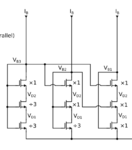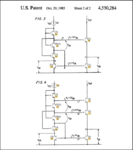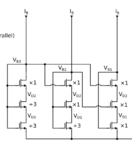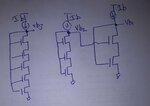Junus2012
Advanced Member level 5

Dear friends,
I am trying to use this circuit attached below for biasing the cascode transistors in of the Op-amp. This circuit was highlighted to me by Dominik but I still unable to understand the princible of operation regarding the voltages Vntail, Vncas1 and Vncas2.
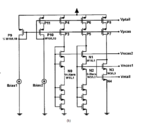
What I know is that:
Vtail = Vov+Vth
Vncas1= 2Vov+Vth
Vncas2 = 3Vov+Vth
But I dont know how it is coming or the setting to generate these voltages from this circuit.
What will be the difference by biasing using the wideswing mirror, the one shown below

Thank you in advance
Best Regards
I am trying to use this circuit attached below for biasing the cascode transistors in of the Op-amp. This circuit was highlighted to me by Dominik but I still unable to understand the princible of operation regarding the voltages Vntail, Vncas1 and Vncas2.

What I know is that:
Vtail = Vov+Vth
Vncas1= 2Vov+Vth
Vncas2 = 3Vov+Vth
But I dont know how it is coming or the setting to generate these voltages from this circuit.
What will be the difference by biasing using the wideswing mirror, the one shown below

Thank you in advance
Best Regards

